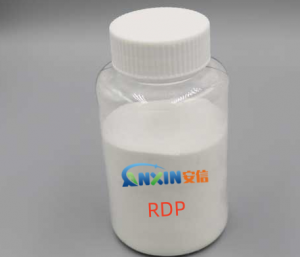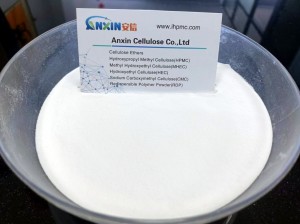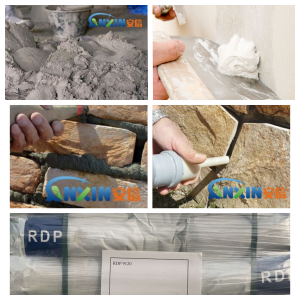Redispersible polymer powders (RDP) are essential additives in dry-mix mortar formulations used across a range of construction applications, including tile adhesives, wall putty, self-leveling compounds, and external insulation finishing systems (EIFS). These polymer powders are manufactured by spray-drying polymer emulsions, producing a free-flowing powder that re-disperses in water to reform the original latex. RDP improve key properties like flexibility, adhesion, impact resistance, and water retention. However, selecting the right RDP requires understanding both the chemical composition and functional performance of different types available in the market.
1.Key Components of RDP
Redispersible polymer powders are composed of the following:
Polymer base: The core polymer material, typically vinyl acetate-ethylene (VAE), vinyl acetate-acrylic (VAc-Acr), styrene-butadiene (SBR), or ethylene-vinyl chloride (EVA).
Protective colloid: Often polyvinyl alcohol (PVA), which encapsulates the particles during spray drying and stabilizes them in water.
Additives: Anti-caking agents like starch ether or mineral fillers may be added for better storage stability and flowability.
2.Types of RDP and Their Characteristics
2.1. Vinyl Acetate-Ethylene (VAE) Copolymers
Properties: Balanced adhesion, flexibility, and water resistance.
Applications: Tile adhesives, repair mortars, wall putty, and skim coats.
Advantages:
Excellent redispersibility.
Good adhesion to inorganic surfaces.
Economical and widely available.
2.2. Vinyl Acetate-Acrylic (VAc-Acr) Copolymers
Properties: Higher water resistance and UV stability compared to VAE.
Applications: EIFS, exterior plasters, decorative mortars.
Advantages:
Enhanced durability in outdoor environments.
Stronger film formation under varying conditions.
2.3. Styrene-Butadiene Rubber (SBR) Powders
Properties: Outstanding flexibility and impact resistance.
Applications: Floor screeds, waterproofing mortars, crack-resistant renders.
Advantages:
Superior elongation and tensile strength.
Good adhesion even on non-porous substrates.
2.4. Ethylene-Vinyl Chloride (EVA) Copolymers
Properties: High flexibility and water repellency.
Applications: Specialty tile adhesives, repair compounds, waterproof coatings.
Advantages:
Better chemical resistance.
Improved adhesion in harsh environments.
3.Criteria for Selecting the Right RDP
3.1. Application Requirements
The end-use determines which properties are most critical:
Tile adhesives require high tensile adhesion and slip resistance.
EIFS demands flexibility and weather resistance.
Self-leveling compounds need flowability and reduced shrinkage.
3.2. Substrate Compatibility
Consider the base material (concrete, gypsum, brick, etc.) and environmental exposure. For non-porous or smooth substrates, RDP with superior bonding properties such as SBR are preferred.
3.3. Flexibility and Deformation Tolerance
Exterior systems or structures exposed to thermal cycles need RDP with high elongation and flexibility (e.g., EVA or SBR).
3.4. Water Retention and Workability
The addition of RDP improves water retention, critical in hot or dry climates. VAE types typically enhance workability and open time.
3.5. Mechanical Performance
RDP influence tensile strength, impact resistance, and abrasion resistance. Select based on the load-bearing or wear conditions.
3.6. Environmental Durability
For exterior applications, UV resistance, alkali stability, and water resistance are vital. Acrylic-based or EVA RDP are more suitable in such conditions.
4.Differentiating RDP in Practice
Even within the same polymer type, variations exist based on:
Glass transition temperature (Tg): Lower Tg results in softer, more flexible films. Higher Tg offers rigidity and better hardness.
Particle size: Affects dispersion rate and surface finish.
Polymer content (%): Indicates the active material; higher content generally means better performance but increased cost.
Film-forming temperature: Low MFFT (minimum film-forming temperature) polymers form films at ambient conditions, critical for cold climates.
5.Performance Testing and Quality Indicators
When evaluating or comparing RDP, the following tests are commonly used:
Redispersibility test: Ensures the powder can re-disperse fully in water.
Bond strength (tensile adhesion): Measured before and after aging or water immersion.
Flexural and compressive strength: Assesses structural improvements in mortars.
Shrinkage and crack resistance: Important in repair mortars or thin-layer applications.
Workability and open time: Evaluates usability on job sites.
6.Cost vs. Performance Balance
While high-performance RDP like EVA or SBR offer superior properties, they come at a higher cost. For cost-sensitive applications, standard VAE powders offer a good compromise. Blending different grades can also optimize performance while managing expenses.
Selecting the right redispersible polymer powder involves a strategic balance of technical performance, environmental suitability, and cost-efficiency. Understanding the chemical makeup, mechanical properties, and application-specific needs allows formulators to choose the ideal RDP for their mortar or construction product. As the construction industry increasingly demands performance-driven, sustainable, and easy-to-use materials, the role of RDP continues to expand—making correct selection and differentiation more important than ever.
Post time: Aug-07-2025


